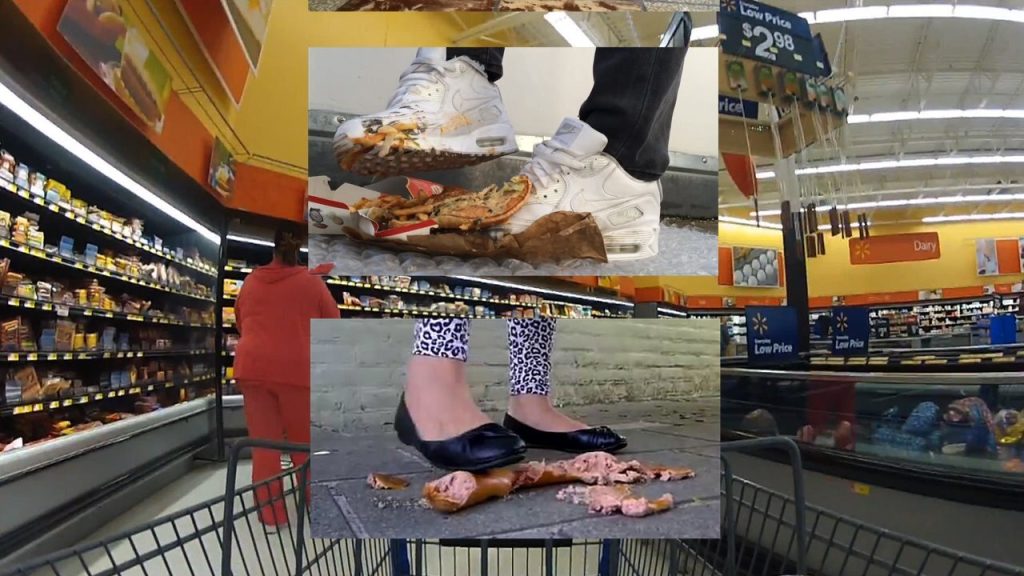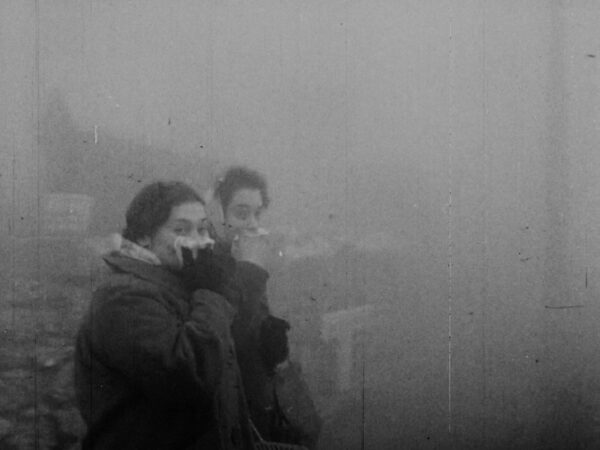The Online Fascinations of NEOZOON
Using collages of found footage on YouTube—with subjects ranging from hunting videos to the unboxing of snakes ordered by mail—the collective NEOZOON uncovers patterns in human behaviour.

NEOZOON, the collective of female artists operating from Berlin and Paris, started making street art in 2009. Their socially engaged agenda was clear from the beginning: a focus on the relationship between humans and animals, often challenging the concept of seeing mankind as the pinnacle of god’s creation. Using collages of found footage on YouTube—with subjects ranging from hunting videos to the unboxing of snakes ordered by mail—they uncover patterns of recurring language, both in voice and image.
Go Short-programmer Mathieu Janssen talks to two of the collective’s members. Accompanying this interview, the collective also curated an online playlist of their YouTube fascinations.
Your films have been screened more often at film festivals in recent years. How did you get into the short film festival circuit in the first place?
We’ve been making videos since 2010. Our first one was a documentary about an installation we did at the zoo in Muenster. We then continued making films and participated more and more in festivals. As a result, distributors Light Cone and Collectif Jeune Cinéma from Paris wanted to include us in their programme, while we also exhibited in contemporary art institutions such as Kunstwerke Berlin, Kunstmuseum Bonn, and Centre Pompidou in Paris.
It’s always surprising to me how separated the art world and the film festival world are.
We think it’s a matter of reception. There are some good examples of artists being present in both worlds, of course—like Laure Prouvost, Keren Cytter, Nina Fischer, and Maroan el Sani—but it all really depends on how the artist wants their work to be perceived. There’s a big difference between a red room with velvet seats and a temporary cube where you can come and go as you like. Many festivals react to this by offering extra programmes like the various art venues during IFFR or the Monitoring Exhibition during Dokfest in Kassel. It would be very nice if this became more established.
You started as a street art collective making street art that then gradually started producing audio-visual content by using found footage from YouTube. This seemed like two very different forms at first, but then it occurred to me that they’re somehow also very related when you consider YouTube as a digital public space. Was it a logical step for you to move to YouTube collages?
You’re right though it doesn’t look like it was a logical step for us. One of our earlier works was an ongoing street art project in several European cities, which gained international attention. Our interest in public spaces and their visual language has left a lasting impression on our work. Since we’re working with moving images, we’re exploring the visual language of digital spaces. It’s very fascinating doing sociological studies on YouTube, e.g., about the relationship between humans and their habitats. The permanent actuality of the Internet makes it incredibly exciting to work with.
Is there also a connection between how you present it and where people watch it? Your earlier work was visible in public space. Do you want people to watch your audiovisual work on a free accessible platform like YouTube as well?
You can find almost all our films online on Vimeo, except for our latest projects because some festivals only show premieres. We always wait for the festival participation and put the films online afterwards. In addition, we’re also thinking about an artistic work, especially for YouTube.
How’s your own YouTube behavior: do you ever get lost there, stuck in a loop of spiraling down the dark corners of the platform?
No, never! [both laughing] Of course it happens to us more often that we end up in dark corners—that’s actually what we’re aiming for! But we use YouTube mostly for research and rarely just for fun. We might watch a tutorial sometimes, but that’s not very dark… And when you work you have to be focused, otherwise you get totally lost. It’s a great feature of the platform that you can move the cursor over the timeline of a video to get a preview of what’s coming–this makes it possible to work more effectively.
So the ASMR videos that you included in the online playlist you made for Go Short, you never watch these out of leisure, but always because of research?
Yeah, that´s right, it is all about research… But do you watch it? We don’t know any of the millions of subscribers who admit it!
Same for me, it’s very intriguing, but I never use it to calm down. So how did you curate the online compilation?
These are all videos that we found when researching for other projects. Whether they’re people who philosophise about the end of the world while eating fries or others who climb into a bathtub full of sausages for fetish satisfaction, these are all very interesting insights into the world of the human species.
What’s the deal with this rhino doctor?
He’s a phenomenon; you should check out his ASMR-channel. His videos are extremely well done and we think his many different figures and masks are referring to existing science fiction stuff. He calls himself a self-taught, independent, homegrown jack-of-all-trades master-of-none, who is akin to a mad scientist working in an underground laboratory creating unique concoctions.
You focus a lot on the similarities between visual and spoken language and people copying each other’s behaviour. Is copycat behaviour something that worries you, or do you see some beauty in it?
It’s neither terrible nor beautiful, but in our work, it’s actually not about the repetition itself. This repetition in the language is more the methodology we use to show human behaviour. The contradictions within human behaviour—f.i. how we treat animals, and how we see ourselves as the crown of creation—manifests itself online. By mapping these topics on YouTube, and taking the material out like a sculpture, we are forming a collage to depict the human species. This repetition is a great possibility to unveil certain patterns.
When showing human behaviour, there is always a very thin line between holding up a mirror, showing disapproval, and mocking people. How do you deal with finding that balance?
The line is indeed very thin when you edit all those same sentences together and let them speak in a choir. We discuss it a lot while editing and researching because we don’t like mocking people and try to avoid stereotypes. First of all, we don’t use the ugliest videos—believe us, there are much uglier videos out there. Unfortunately, most of the material online is very stereotype-affirming. We don’t make that stuff up, and sometimes we have to make an extreme effort to find a man in a group of animal-loving women. Sometimes, they just don’t exist, and we show that.
It doesn’t come across as mocking in my opinion; you seem to have a very activist starting point in your films.
In the first place, we see ourselves as researchers of the human being, taking a closer look at the contradictions in their worldview. Our worldview sometimes points in the opposite direction of what is needed to solve the big issues of our time, like the climate crisis. When addressing these topics, you can definitely call us activists.
I do see a clear opinion in your work though. Am I right in stating that you, in your films, try to point out that it is quite ridiculous that mankind sees itself as the center of creation?
Of course! In our films, we try to show that humans are also animals. In our newest films, where we include the subject of religion, we try to unveil a bit of our history, and how we got to this point of seeing ourselves as the crown of creation.
In Little Lower Than The Angels you seem to have a new perspective on the matter, investigating our relationship with animals on a more meta-level. Is this something you want to explore more?
It’s a fascinating subject; religion plays a huge role. The followers of creationism have an influence on politics that should not be underestimated. They’re all convinced that humans—unlike animals—are chosen by God. This belief in supremacy has led to a disrespectful treatment of the environment over the years. We’ll investigate more about how these “chosen ones” think about their lives after death in future projects.
When you think about the human behaviour you address–like overconsumption or treating animals as products–are you hopeful for the future?
Friederike: I think our opinions differ on that point. I don’t see the future very bright, because I’m afraid that we’ll not overcome patriarchal, capitalist structures and the full recognition of the habitats and needs of other species in the short time we have left.
Michaela: I still have hope, because I firmly believe that a better world is possible. I do believe in the possibility of a social and inclusive society, sustainable agriculture, and climate-neutral energy. However, a change is only possible if sufficiently many people share this hope. Unfortunately, many people today don’t even see the problems of our current way of life, which is wasteful and egocentric. In our work, we show the unrestrained consumerism and short-term profit-oriented exploitation of our earth to raise awareness.
Maybe specifically looking at the relationship we have with animals, the climate crisis might evoke something positive there.
There is an alignment between people fighting for the climate and those fighting for animals. They have to! Look at all those countries where the far-right and creationism are on the rise and old white men take the power. When we want to overcome problems like the climate crisis, we depend on who is in charge. But there’s also something positive happening: younger generations are becoming more aware of their future. Maybe if all the old people die, something will change. [both laughing] No, but seriously, and less misanthropic: stick together and maybe go back to the little units, for example, try to see what you can change in your neighborhood.
Does making films make you feel that you contribute to solving these issues?
Friederike: Yeah, we hope that our films contribute to reflecting the Western way of life and society a bit more. But what the viewers make of it in the end is up to them.
Michaela: I think the serious problems of our time can only be solved in a community of many. With our films, we contribute a piece to this.
Go Short – International Film Festival Nijmegen curated a retrospective of Neozoon’s audiovisual work that can be watched on their online platform. This focus on their work tries to give a balanced overview of the topics they devoted themselves to. It might feel like one of those evenings where you get lost in a loop of YouTube videos—though, in this one, you might actually learn something about human behaviour too.


